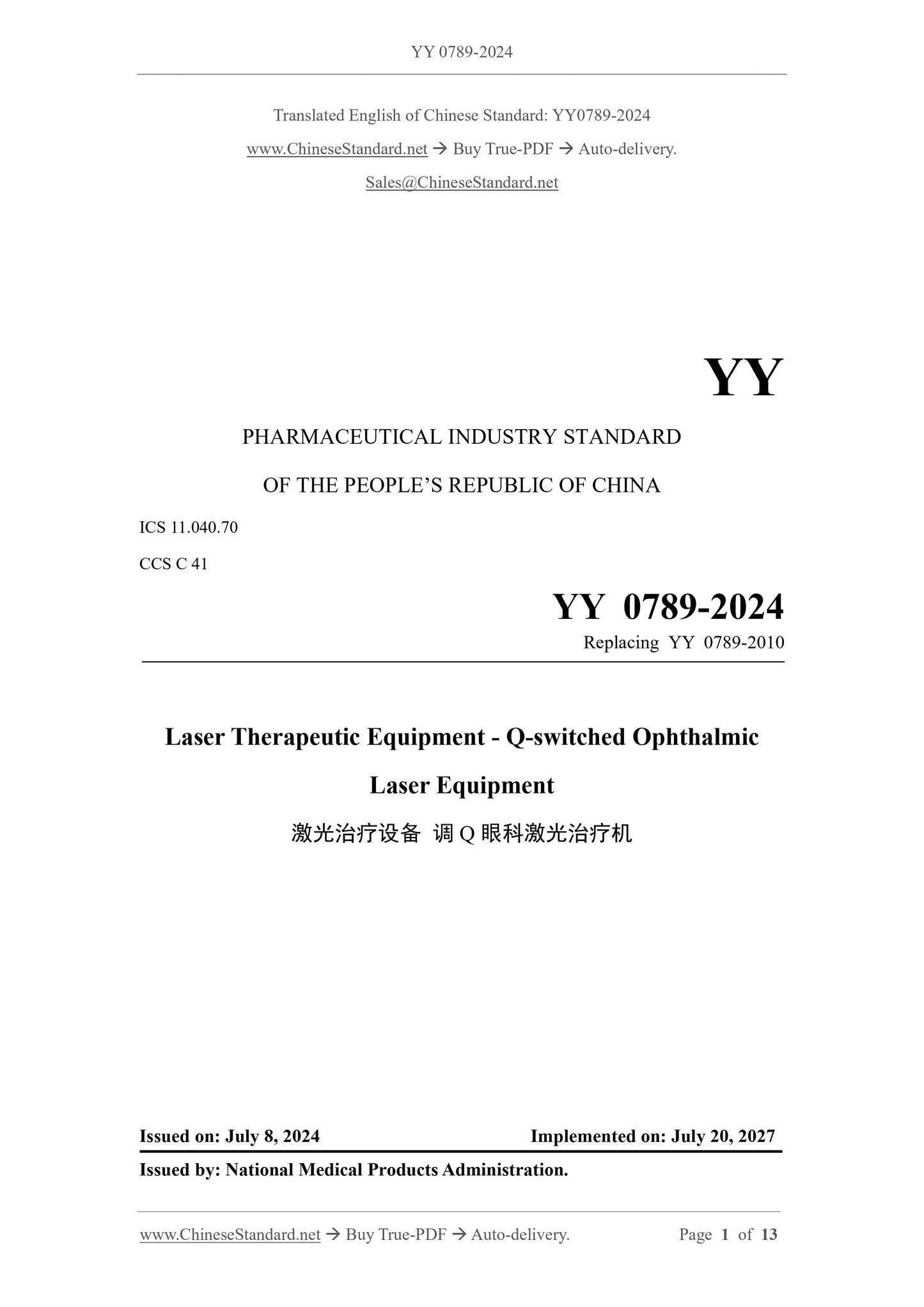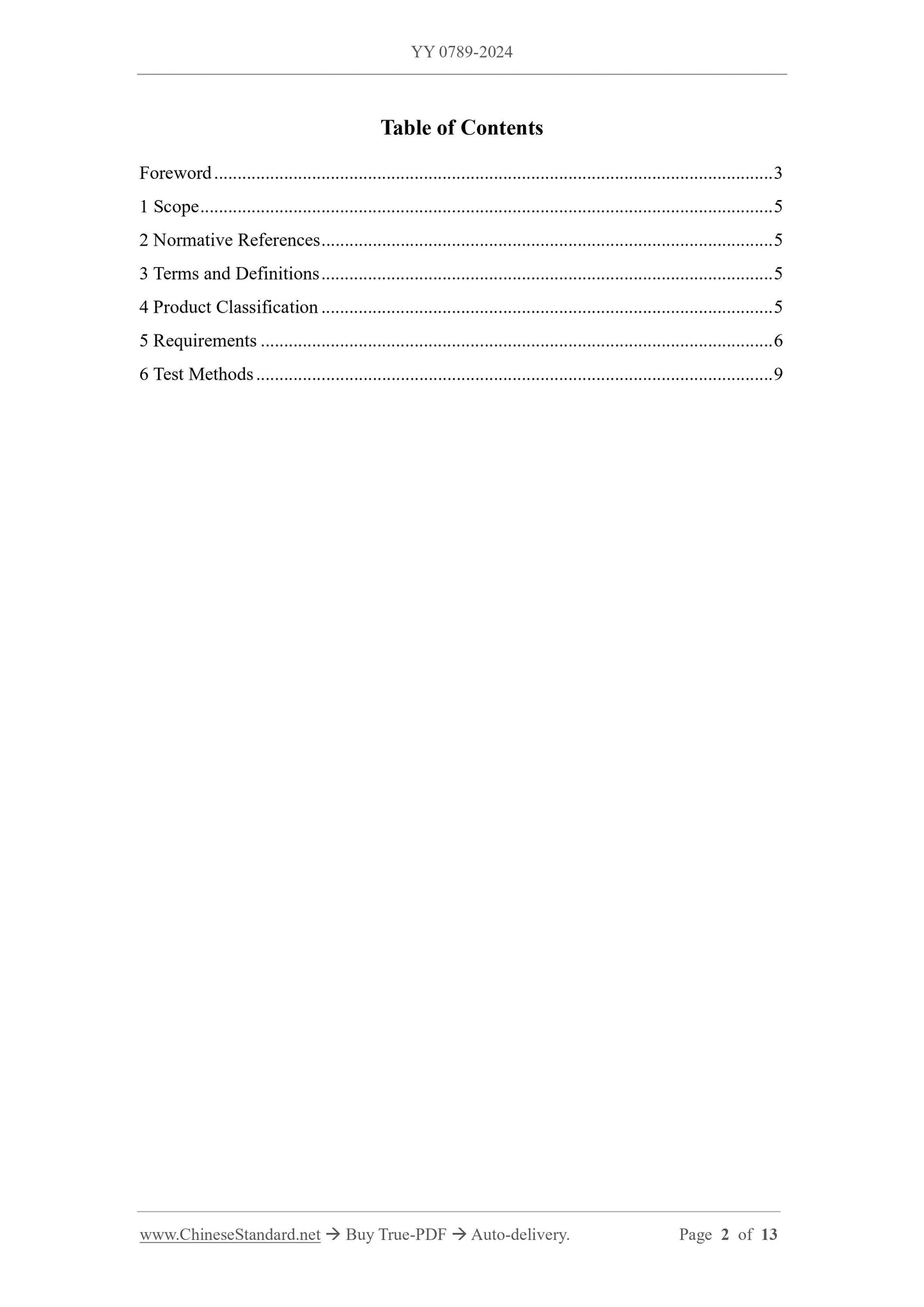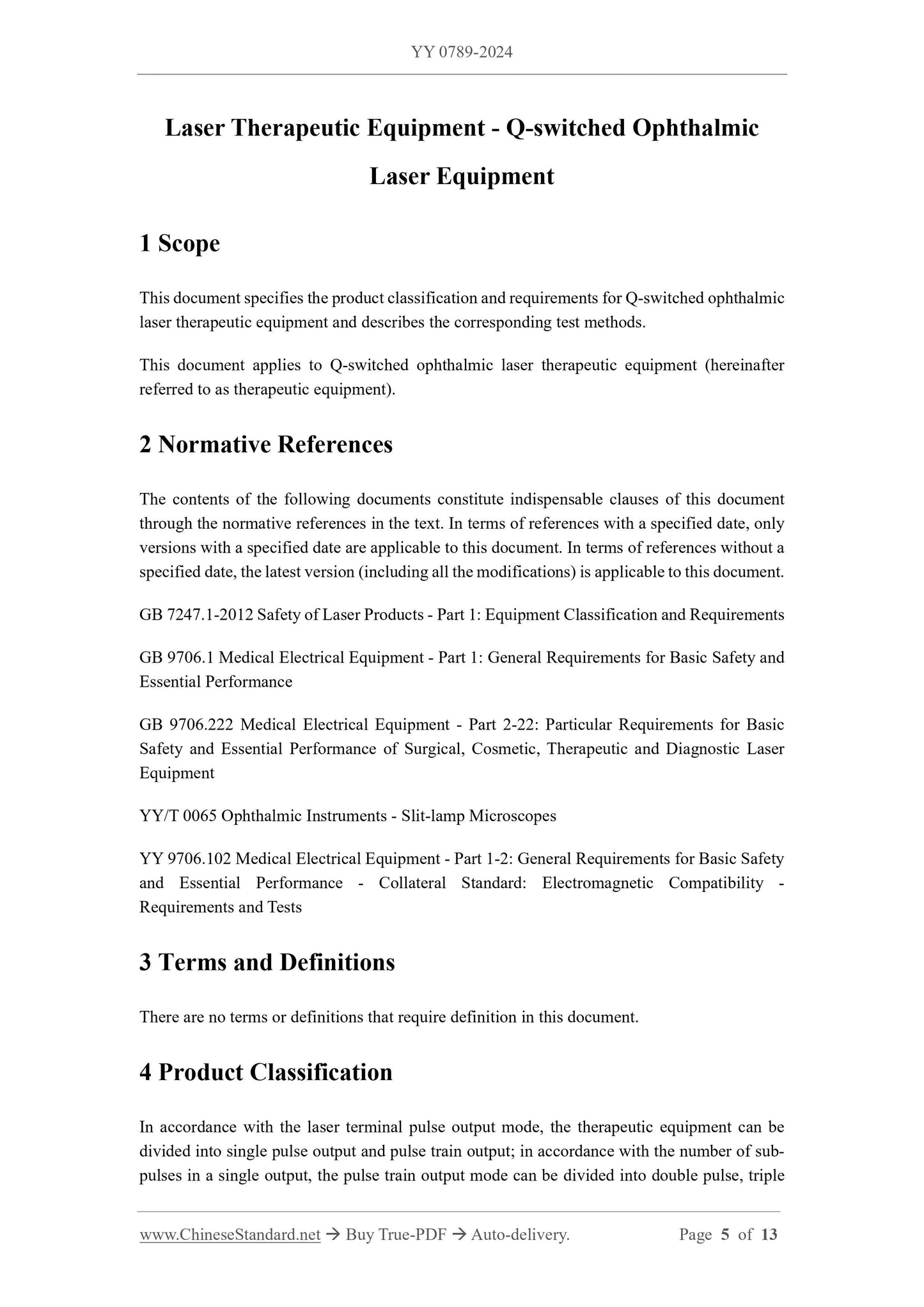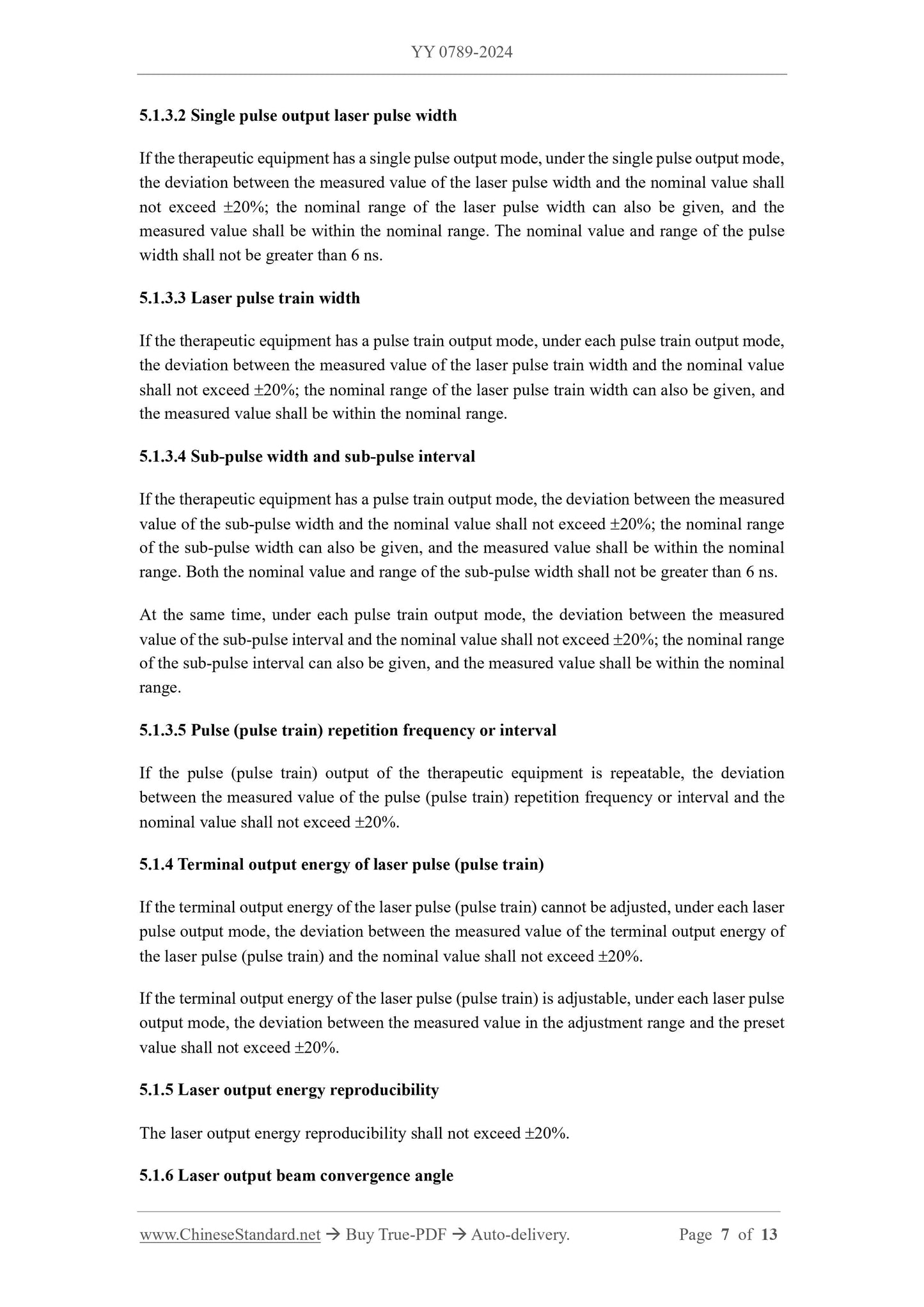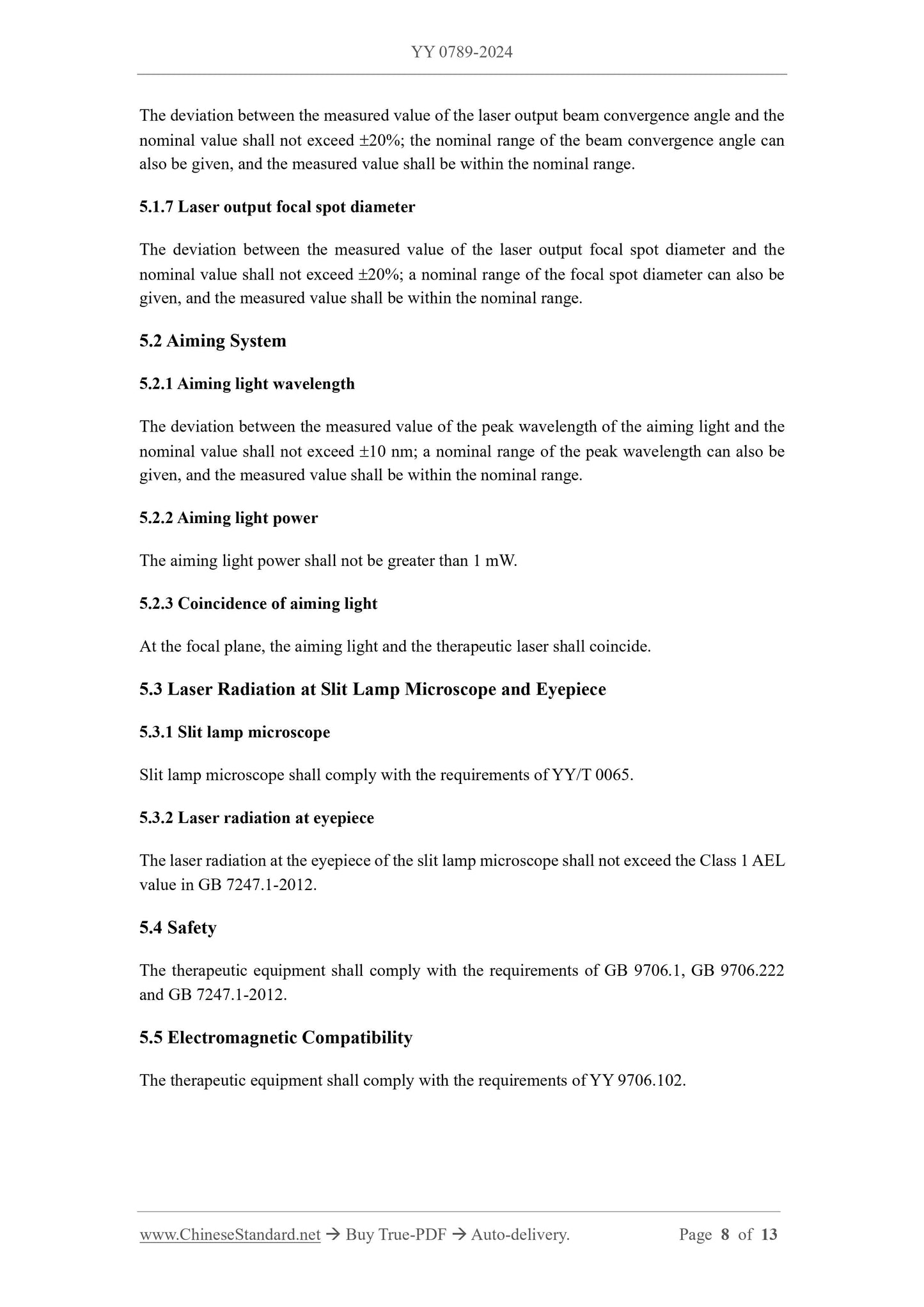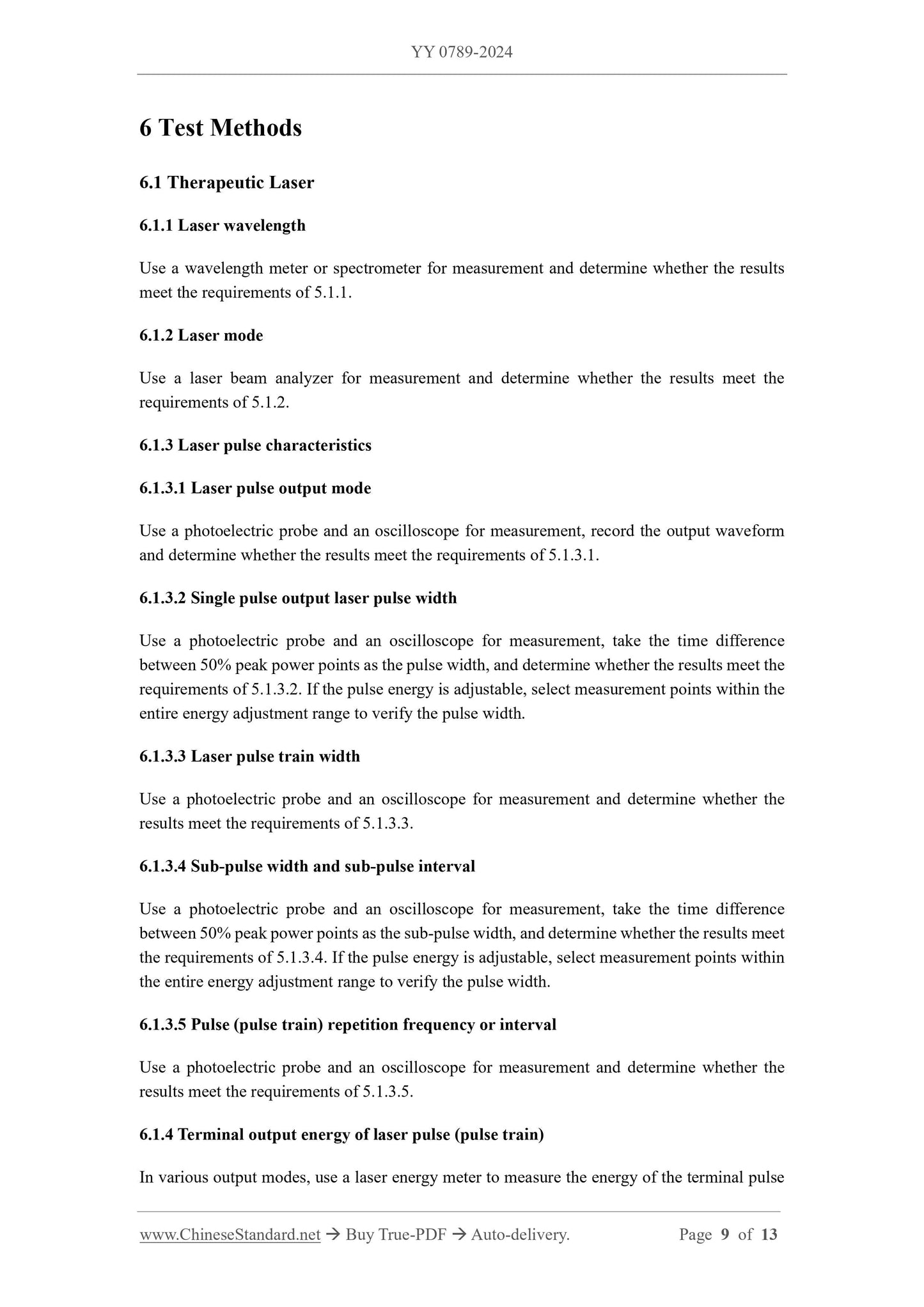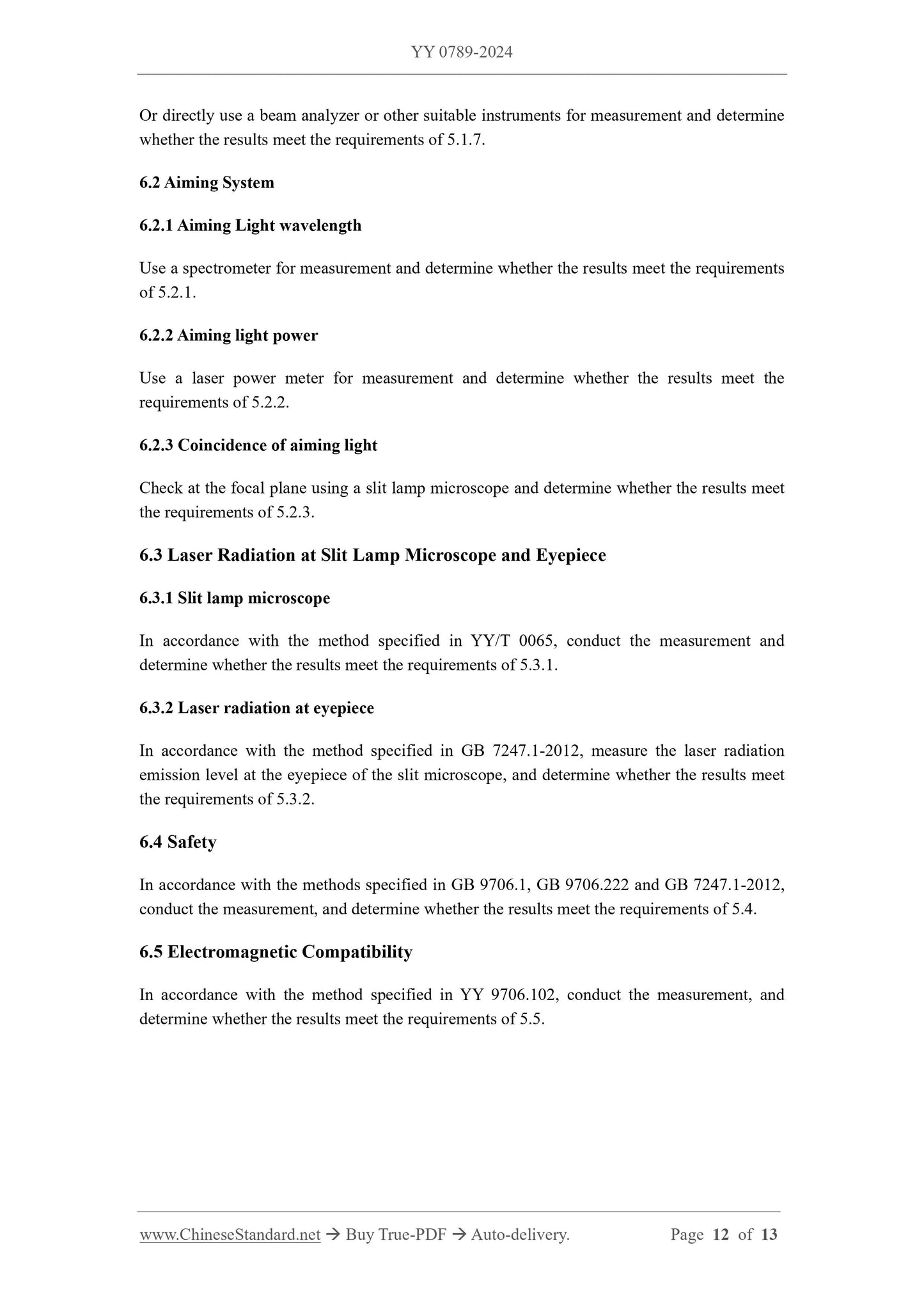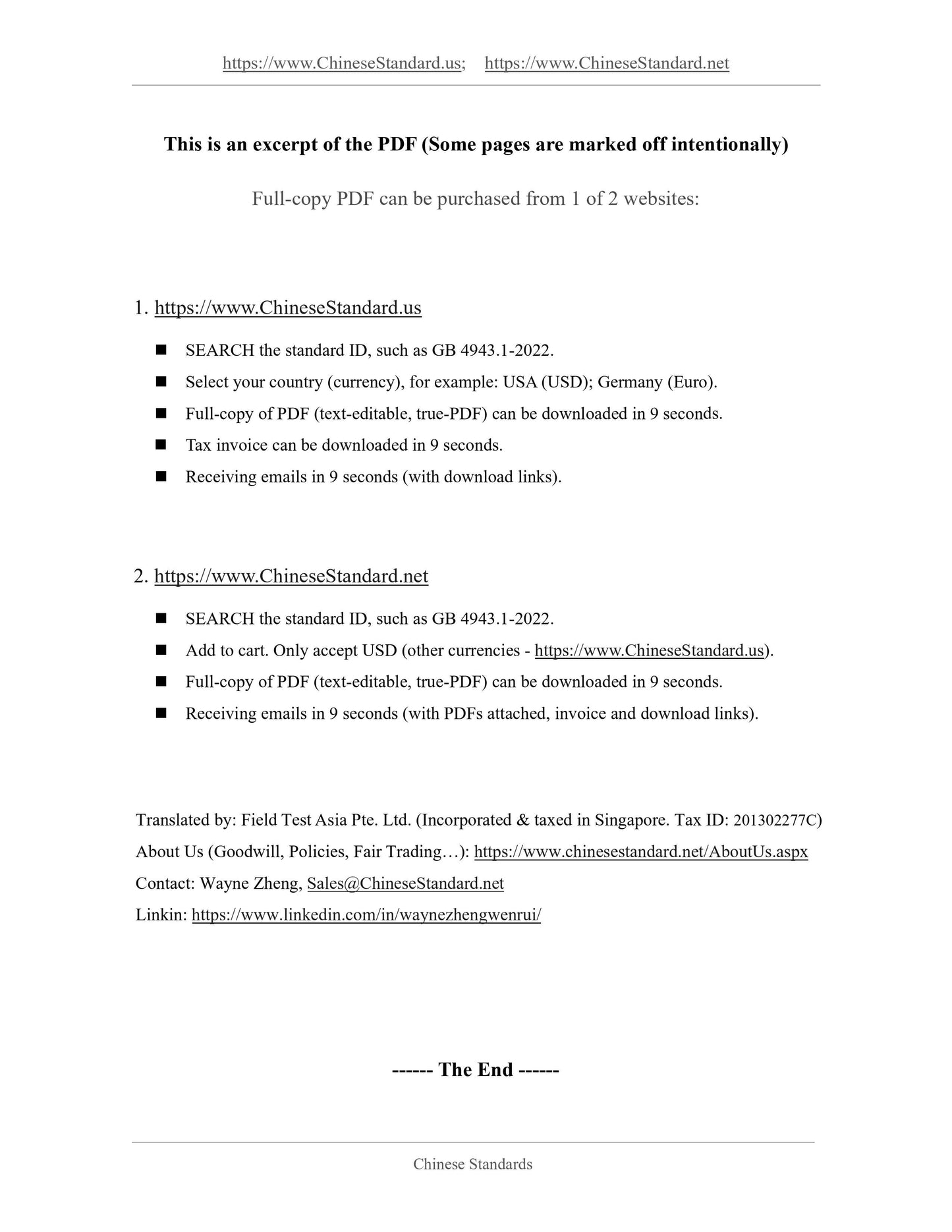1
/
of
8
www.ChineseStandard.us -- Field Test Asia Pte. Ltd.
YY 0789-2024 English PDF
YY 0789-2024 English PDF
Regular price
$140.00
Regular price
Sale price
$140.00
Unit price
/
per
Shipping calculated at checkout.
Couldn't load pickup availability
YY 0789-2024: Laser therapeutic equipment - Q-switched ophthalmic laser equipment
Delivery: 9 seconds. Download (and Email) true-PDF + Invoice.Get Quotation: Click YY 0789-2024 (Self-service in 1-minute)
Newer / historical versions: YY 0789-2024
Preview True-PDF
Scope
This document specifies the product classification and requirements for Q-switched ophthalmiclaser therapeutic equipment and describes the corresponding test methods.
This document applies to Q-switched ophthalmic laser therapeutic equipment (hereinafter
referred to as therapeutic equipment).
Basic Data
| Standard ID | YY 0789-2024 (YY0789-2024) |
| Description (Translated English) | Laser therapeutic equipment - Q-switched ophthalmic laser equipment |
| Sector / Industry | Medical Device and Pharmaceutical Industry Standard |
| Classification of Chinese Standard | C41 |
| Classification of International Standard | 11.040.70 |
| Word Count Estimation | 14,173 |
| Date of Issue | 2024-07-08 |
| Date of Implementation | 2027-07-20 |
| Older Standard (superseded by this standard) | YY 0789-2010 |
| Issuing agency(ies) | State Drug Administration |
Share
